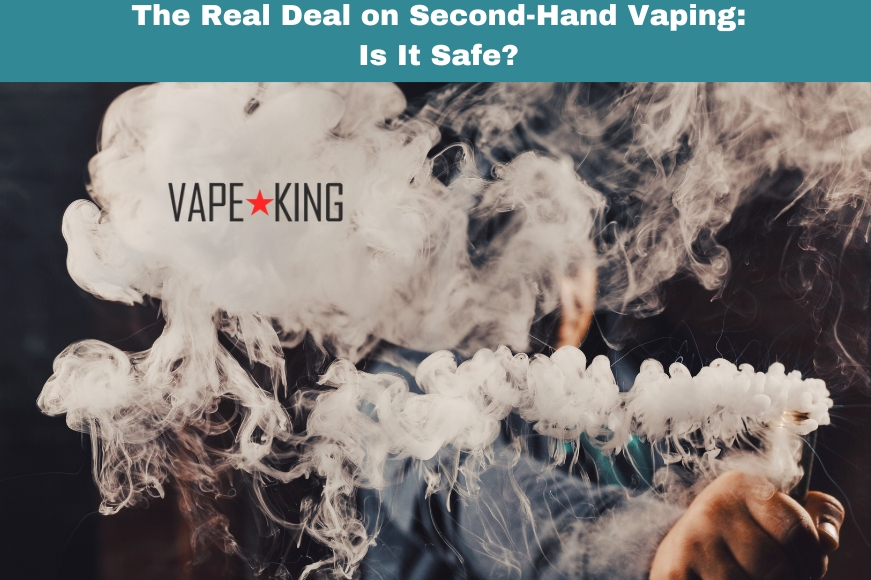Free Shipping on orders R1000 or more!
The Real Deal on Second-Hand Vaping: Is It Safe?

Although vaping has been widely adopted, there's still a lot of curiosity about its long-term effects. While we await more research, current evidence suggests that vaping is significantly safer than smoking traditional cigarettes. With that in mind, people often ask: what are the risks associated with inhaling second-hand e-cigarette vapour? Keep reading to find out more about second-hand vaping, its risks, and what it means for you.
Understanding Second-Hand Vapour
Second-hand vapour is the aerosol exhaled by someone using an e-cigarette. This vapour lingers in the air briefly, allowing those nearby to inhale some of it. While this process may sound similar to second-hand smoke, it's not as dangerous due to the differences between vapour and smoke.
Cigarette smoke comes from burning tobacco and other substances, releasing a cocktail of toxic gases and carcinogens like carbon monoxide, tar, and solid particles. Although second-hand smoke isn't as harmful as direct cigarette smoke, prolonged exposure still poses health risks, including respiratory issues, asthma, heart disease, high blood pressure, strokes, and even lung cancer.
On the other hand, e-cigarettes heat e-liquids using a small metal coil in the atomizer. This process doesn't involve combustion but simply heats the liquid to produce vapour. E-liquids generally contain three key ingredients:
- Vegetable Glycerin (VG) and Propylene Glycol (PG): These are common base liquids also found in food and pharmaceuticals, considered generally safe.
- Flavourings: These are the same flavourings used in food and drinks, which is why e-liquids can taste like your favourite candies, drinks, or desserts.
- Nicotine: This is optional in e-liquids, with varying concentrations to suit different preferences. While nicotine has its risks, vaping is considered a safer way to consume it compared to smoking.
Because vapour doesn't contain tar or carbon monoxide, and its particles are liquid rather than solid, the risks are much lower compared to second-hand smoke.
What About Second-Hand Vaping Risks?
Research on second-hand vaping suggests that the health risks are minimal. Unlike smoking, e-cigarettes don't produce a constant stream of vapour; it only occurs when the vaper exhales. By this time, most of the e-liquid components have been absorbed, leaving little for bystanders to inhale.
Additionally, factors like device design, voltage settings, and e-liquid composition can affect the amount of vapour produced. Mod devices, for instance, generally produce denser vapour clouds due to higher settings, while e-liquids with more VG also create more vapour.
Third-Hand Vaping: Fact or Fiction?
Third-hand vaping refers to the idea that vapour can settle on surfaces, potentially posing risks if children or pets ingest the residue. However, studies indicate that any residue left from vapour contains minimal traces of e-liquid ingredients, making it unlikely to cause harm.
Conclusion: Safe Vaping Practices
While current studies suggest that second-hand vaping poses minimal risks, it's still important to be considerate of others. Avoid vaping around people with respiratory sensitivities, the elderly, children, or pets. Always check local rules and respect the preferences of those around you. By following these guidelines, you can enjoy vaping without causing unnecessary concern.
Happy vaping, and remember to always be mindful of those around you!
No posts found
Write a review

